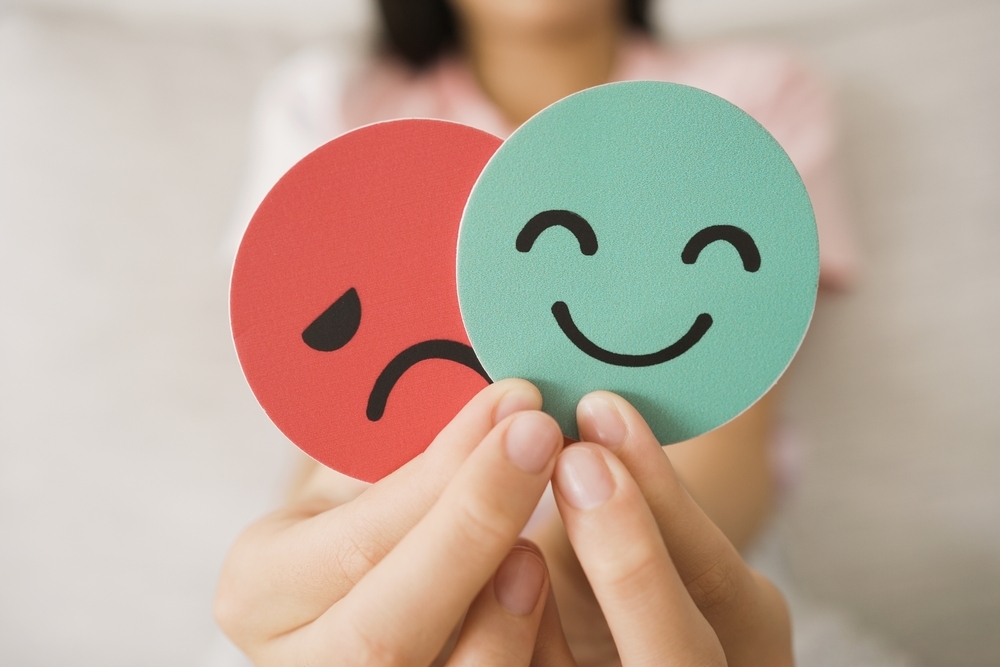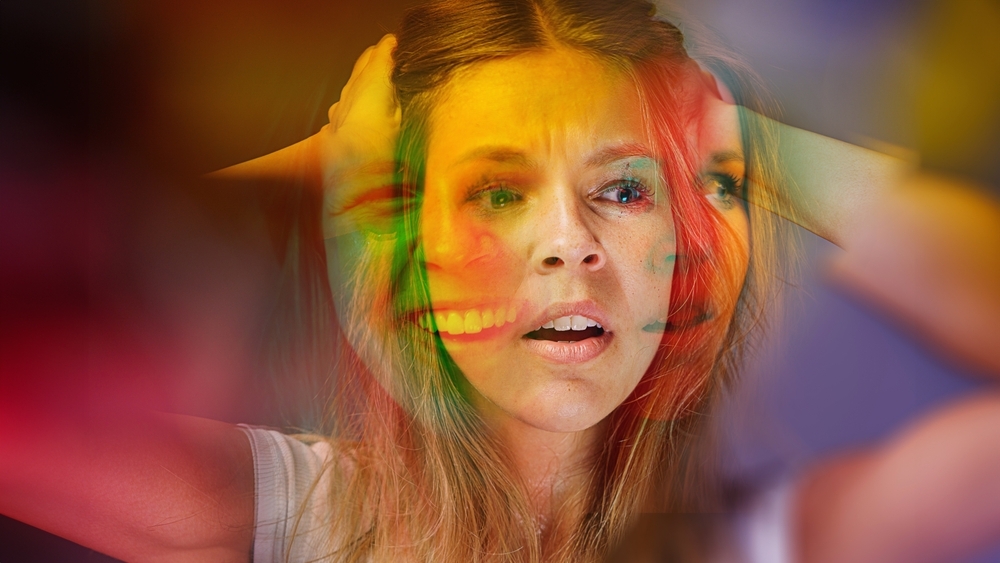Last Updated:
March 31st, 2025
Bipolar disorder, formerly called manic depression, is a complex mental health condition characterised by harsh swings in mood, energy and behaviour. Stigmas and discrimination against people with bipolar disorder are felt across the country, yet research shows that over one million people in the UK suffer from it.
How is bipolar disorder defined?
Bipolar disorder is diagnosed based on patterns of extreme mood fluctuations that significantly impact daily life. A person with bipolar disorder will fluctuate between emotional highs, known as mania or manic episodes, to notable low points, described as major depressive episodes.
Bipolar disorders do not discriminate and can affect people of all ages and from any background. However, symptoms are usually first noticeable in teenagers or young adults and 50% of people show symptoms before the age of 21.
Diagnoses of bipolar disorder are generally carried out by a doctor, psychiatrist or mental health professional, not a GP. A diagnosis involves checking a person’s medical history and any symptoms they have related to mania or depression. A blood test may be part of the process, though bipolar disorders have no markers in the blood. This is part of an examination to help rule out other possible causes for bipolar symptoms and behaviours.
Are there different types of bipolar disorders?
There can be some misconceptions about bipolar disorder as it is still a relatively new area of understanding for health professionals. The Diagnostic and Statistical Manual of Mental Disorders 5 (DSM-5) describes bipolar as a group of disorders that cause extreme fluctuation in a person’s mood, energy and ability to function.
Bipolar disorder can be seen as a category in which there are three main diagnoses:
- Bipolar I disorder: Bipolar I is a manic-depressive disorder that may or may not contain psychotic episodes. Bipolar I sufferers may have the most severe highs (mania) and may not suffer episodic depression.
- Bipolar II disorder: Bipolar II disorder contains alternating depressive and manic episodes. A person with bipolar II may experience less severe highs, but a diagnosis includes depressive episodes.
- Cyclothymic disorder: Cyclothymic disorder is a cyclic disorder in which a person experiences brief episodes of hypomania and depression. The emotional ups and downs in cyclothymic disorders are seen as less severe compared to bipolar I and II.
What are some symptoms of bipolar disorder?
People with bipolar disorders do not have general or typical patterns of symptoms. Some people with bipolar experience more highs, while others are caught for longer in lows. Not all symptoms may be present, but some of the most common include:
- “Mania” or manic syndrome: To help contextualise the peak of a high felt in bipolar disorder, “mania” is often used as the descriptive term. Mania is defined in the MSD Manual as more than one week of an elevated, expansive and irritable mood with changes in energy levels. In a state of mania, a person may become impulsively involved with high-risk activities, like gambling, dangerous sports or promiscuous sexual activity.
- Depressive episodes of low mood: In opposition to the peaks, the experience at the bottom of a swing can be devastating. Depressive episodes are often characterised by deep and persistent sadness. In this broad state of negativity, a person may lose interest in every activity they previously enjoyed. Healthcare professionals sometimes use the term “anhedonia” to refer to the condition of finding no pleasure in life. This is a common symptom of depressive and bipolar disorders.
- Disrupted sleep patterns: A person with bipolar disorder may be suffering with severe sleep disturbances. Hypersomnia (oversleeping) is common in people with bipolar disorder. There can also be a decreased need for sleep, where a suffering person gets by with little or no sleep and doesn’t feel tired the next day.
- Heightened sensitivity: One research paper found that bipolar people felt they were more sensitive than others. This heightened sensitivity was expressed towards both pleasant and unpleasant stimuli, which reinforces the highs and lows typically experienced.
- Suicidal ideation: Life with bipolar disorder is fraught with unsettling feelings of instability. Research shows that at least 50% of people suffering have attempted suicide at least once. This tragic statistic highlights the need for a greater awareness and support system for people who suffer before it’s too late.
What are the causes of bipolar disorder?
Research into the specific causes of bipolar disorders is still ongoing and has not yet found concrete contributors. Bipolar disorders are believed to be the result of a range of risk factors, including:
- Genetic influence: Bipolar disorders unfortunately frequently run in families. Extensive research highlights that 80 to 90% of people with bipolar disorder have a relative who also suffers from it. There may not be one “bipolar gene,” but family dynamics and relationships have a significant effect on the likelihood of bipolar development.
- Childhood trauma: Some health experts believe that experiencing childhood trauma or distress can start the development of bipolar disorder. This may be because childhood trauma impairs your ability to manage your emotions.
- Medications, drugs and alcohol: Medications, drugs and alcohol may cause a person to experience bipolar mood symptoms. For example, studies on antidepressants found an association with increased mania or bipolar disorder. Additionally, alcohol and other recreational drugs can cause you to feel mania, hypomania or depression. Further research into the way drugs and bipolar disorder are linked is still limited.
What impact can bipolar disorders have on someone’s life?
Living with bipolar disorder can affect people in different ways. It is believed that although bipolar symptoms may come and go, a bipolar disorder usually requires lifelong treatment and does not go away on its own.
People with bipolar disorder still experience middle moods between highs and lows; a state sometimes referred to as “euthymia,” However, the volatile nature inherent to bipolar mood swings can lead people to rushed decisions in the heat of a moment. For example, in the heights of mania or in the troughs of a depressive episode, a suffering person might brashly decide to spend savings, make major mistakes at work or damage their relationships with loved ones.
According to the charity BipolarUK, people with bipolar disorder frequently report blaming themselves for their behaviour. Feelings of guilt and low self-worth undermine the motivation and drive a person needs to make improvements. Talking to a GP if you’re worried you may have bipolar disorder can open the door to treatment and support management techniques so you can regain control over the way it affects you.
I need support with my mental health
Living with bipolar disorder presents many challenges. Data shows how people with bipolar disorder are more likely to develop co-occurring disorders and addictions to drugs and alcohol. If you’re affected, we want to reach out a hand.
Here at UKAT, we have specialist therapy programmes to treat substance use disorders and co-occurring with mood disorders like bipolar. Our Holistic treatments promote mental well-being and emotional resilience.
If you or a loved one are struggling with addiction, bipolar disorder or mental health challenges, reach out today. The support you need is only a phone call away.
(Click here to see works cited)
- NHS Choices, NHS, www.bsmhft.nhs.uk/about-us/news/bipolar-disorder-lets-talk-about-it/
- “Understanding Bipolar.” Bipolar UK, www.bipolaruk.org/understanding-bipolar
- DSM-5 Criteria: Bipolar Disorders, floridabhcenter.org/wp-content/uploads/2021/02/Bipolar-Disorders_Adult-Guidelines-2019-2020.pdf
- Bipolar Definition and DSM-5 Diagnostic Criteria, www.healthcentral.com/condition/bipolar-disorder/bipolar-dsm-5-criteria
- Roland, James. “Bipolar 1 vs. Bipolar 2 Disorder.” Healthline, Healthline Media, 30 Aug. 2023, www.healthline.com/health/bipolar-disorder/bipolar-1-vs-bipolar-2.
- “Bipolar Disorders – Psychiatric Disorders.” MSD Manual Professional Edition, www.msdmanuals.com/professional/psychiatric-disorders/mood-disorders/bipolar-disorders
- The EUTHYMIC Mood: Understanding Its Role in Mental Health, www.healthcentral.com/condition/bipolar-disorder/euthymic
- Emotional Hyper‐reactivity in NORMOTHYMIC Bipolar Patients, onlinelibrary.wiley.com/doi/10.1111/j.1399-5618.2008.00656.x
- Jamison KR. Suicide and bipolar disorder. J Clin Psychiatry. 2000;61 Suppl 9:47-51. PMID: 10826661
- Prevalence of Bipolar 1 Disorder, www.medcentral.com/behavioral-mental/bipolar-disorder/bipolar-disorder-prevalence-and-risks
- Patel R, Reiss P, Shetty H, Broadbent M, Stewart R, McGuire P, Taylor M. Do antidepressants increase the risk of mania and bipolar disorder in people with depression? A retrospective electronic case register cohort study. BMJ Open. 2015 Dec 14;5(12):e008341. doi: 10.1136/bmjopen-2015-008341. PMID: 26667012; PMCID: PMC4679886.
- “Bipolar Disorder.” National Institute of Mental Health, U.S. Department of Health and Human Services, www.nimh.nih.gov/health/publications/bipolar-disorder
- Fava GA, Guidi J. The pursuit of euthymia. World Psychiatry. 2020 Feb;19(1):40-50. doi: 10.1002/wps.20698. PMID: 31922678; PMCID: PMC7254162.



